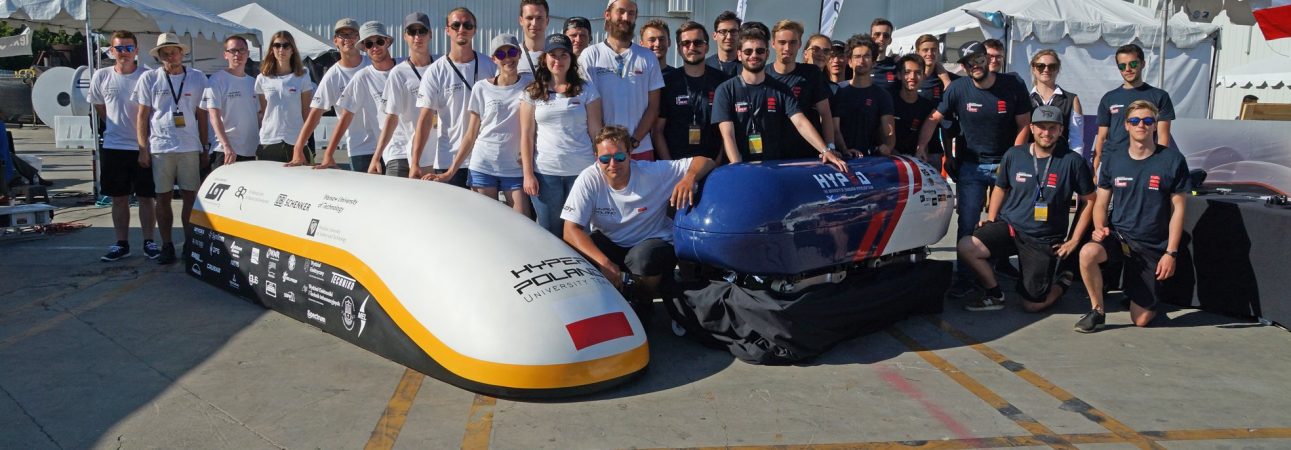Hyper Poland seeks to develop the next generation of High-Speed Railways, based on magnetic levitation, linear motor and autonomous control systems. We can gradually implement hyperloop-inspired solutions as an upgrade for the railway industry.
patent-pending magrail technology allows parallel operation of existing wheel-rail trains and passive magnetic vehicles on the same existing railway line at speeds of up to 415 kph (258 mph).
Magrail can be subsequently transformed into a vacuum system – hyperrail, with a top speed of up to 1,000 kph (621 mph).
This approach significantly reduces implementation costs and time, compared to greenfield hyperloop deployment, which is stage three of our commercialization strategy.
Global warming
The accelerating global warming has triggered a bold response of the EU Commission with its Green Deal initiative which aims to leverage up to EUR 1 Trillion and includes actions to boost cleaner transport.
According to a 2017 WHO report, the transport sector accounts for 21% of global CO2 emissions. But while HSR trains produce only 6g of CO2 per passenger kilometer – opposed to 171g for cars and 253g for domestic flights – rail accounts for less than 8% of passenger traffic in the EU-28. For freight transport, the situation is equally critical with forecasted market growth in the EU by 30% until 2030.
Funding so far
In the first half of 2019, Hyper Poland secured a EUR 3.8 million EU grant from the Polish National Centre for Research and Development for R&D, including the construction of a test facility in Poland. They have also raised a EUR 334k pre-seed round on Seedrs from over 450 investors from 30 countries. With this capital, in just a few months, they grew their team to 32 highly skilled experts and built a 1:5 scale Proof-of-Concept of our magrail technology which was unveiled to the public in October 2019.
Monetisation strategy
Business model for Hyper Poland aims to develop Intellectual Property (IP) which they protect with patents. We aim to be licensed to:
1. manufacturers of rolling stock,
2. railway infrastructure elements’ manufacturers,
3. optionally also to hyperloop companies (e.g. technology of linear electric motor and passive magnetic levitation).
Hyper Poland are currently focused on hardware, where we have unique skills and are aiming to be protected by patents. Software, enabling efficient use of it, will be developed in partnership with global industry players.
Hyper Poland expect a 2.4% licensing fee on manufacturers revenues on licensed elements from two segments:
• vehicle elements: propulsion and suspension (magnetic bogies), tilting mechanism.
• infrastructure elements: linear motor & magnetic track, integrators with conventional tracks.
Alternatively, Hyper Poland might go into Joint Ventures with manufacturers.
Exit strategy aim that within ca. 10 years the company will be acquired by one of the leading global railway suppliers.
Use of proceeds
Proceeds from this campaign will serve to continue R&D on key elements of magrail. Each euro from this round will be leveraged by another four euros from an EU grant.
Funds will also be used to strengthen our biz dev activities by growing the team needed for negotiations of partnerships and pilots.
Hyper Poland are planning cooperation with leading international experts in business development, investment banking, and magnetic railways’ project management. The prospects have broad experience in companies such as Dalkia, BNP Paribas, Alstom, Rothschild, Veolia, and Transrapid, which built the world’s first commercial maglev line in Shanghai.
Hyper Poland aim to open a Swiss office, which will:
• serve potential indirect clients in three key markets: Germany, France & Italy,
• grow the number of international corporate partnerships,
• develop R&D partnerships and recruit international engineering talent,
• facilitate access to Western European sources of funding.

